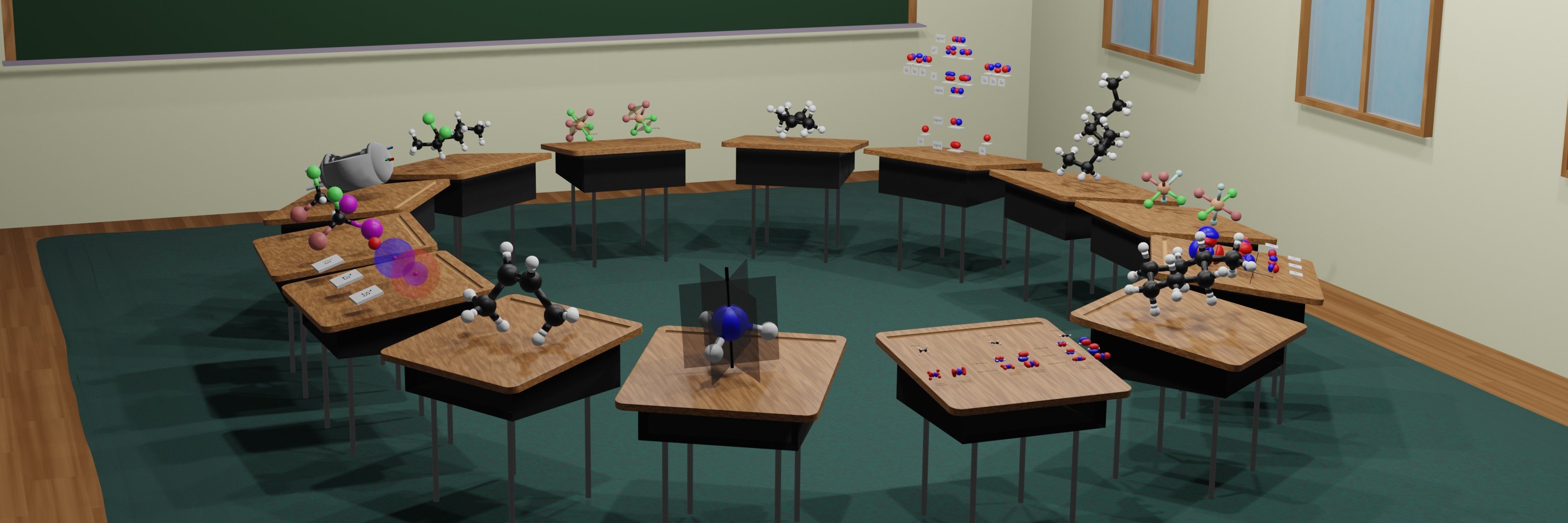Introduction
My name is Michael Aristov, though due to there being three Michaels in our ~9-person research group, I go by Mike A. I originally found my passion for chemistry when I was an undergraduate student at the University of California, Davis. While there, I had the pleasure of working with Professors Marilyn Olmstead and Alan Balch. I was tasked with synthesizing small inorganic compounds and performing cocrystalizations on endohedral fullerenes. I was inspired whenever I held up an innocuous glass vial with a few hundred milligrams of nondescript brown crystals, as I knew that I was potentially the first being to have forged that molecule. Through the technique of Single Crystal X-ray Diffraction (SCXRD), I was able to peer inside of the crystal to determine the atoms and their positions. This diffraction technique introduced me to 3D data, though the (arguably) archaic software that I used muddied the resulting models. After I received my Bachelor of Science, I moved to Madison, WI to pursue my Ph.D. in the Department of Chemistry at the University of Wisconsin – Madison. There I started working with John Berry, a tenured inorganic chemistry professor, and together we quickly began a number of research projects Our group is particularly excited about this branch of research as it may yield single molecule electronics. Imagine how thin your smart phone could get if every component on the circuit board was 1,000 times smaller than a bacterium. Overall, my time in this research group has left me with a broad skillset in synthetic, analytical, and computational research.
A Need for 3D models in online learning
As a graduate student in chemistry, one way I secured funding for my research and education at the University of Wisconsin – Madison was through serving as a teaching assistant. This role introduced me to the challenges of teaching chemistry to a broad range of students. Although each semester introduced several thousand general chemistry students, all with their own skills, challenges, and (mis)conceptions about chemistry, my task was to mentor two sections of 16-24 students each semester. The herculean task of teaching became even more difficult with the advent of all-online teaching due to the pandemic. This lack of direct interaction made hands-on demonstrations, labs, and group activity almost impossible. In an effort to meet this new set of challenges, I teamed up with Prof. John Berry, Prof. John Moore, Lecturer Dr. Stephen Block, and countless students to start building up a set of teaching tools. We began by making a simple animation of a butane molecule rotating every possible bond.
Starting out
I had no initial experience using any 3D modeling software nor was I aware that Sketchfab existed, so I started the same place most hobbyists do, on YouTube. There I found a plethora of guides, and I slowly taught myself the basics of Blender. I found the guides by “CG Figures” (a YouTube pseudonym) to be particularly helpful for making scientific models. Once I understood the basics, I sifted through my research files, specifically my quantum mechanical calculations from ORCA and Gaussian, to find overlaps between Blender and outputs from those computational results. Through the use of UCSF-Chimera, a very powerful and free visualization software, I found a method to easily import the resulting molecules and orbitals from these calculations into Blender. This discovery trivialized the creation of complex, static 3D models, but I still wanted to include animations. Transferring complex molecular motions, like protein foldingremains one of the big challenges in this field, so I opted to create my animations purely through Blender using the computational outputs as guides. These systems continued to escalate in complexity until I was able to combine both molecular motion and orbitals in one animation.
Sketchfab: The solution to distribution
When presenting to faculty members, they questioned how I intended to distribute these chemistry teaching tools to the students. After searching around the internet, I eventually stumbled across Sketchfab. A quick overview of the website and a couple of test uploads later, I realized the true potential of the platform. Sketchfab managed to resolve all of our concerns over distribution, and its browser-based format meant that compatibility issues due to OS and student tech-savviness were no longer an issue. In an effort to spread the word about these models, we wrote a short Technology Report that was recently published in the Journal of Chemical Education, discussing our process and how we have used these modes in greater detail. The full publication can be read here. A showcase of this publication was made by CG Figures, and can be found here. Through this publication, we were able to gain additional visibility on a global level, as the Journal of Chemical Education is the top journal in its field.
Our library
By combining computational chemistry outputs with Chimera and Blender, we were able to construct a varied library of chemistry teaching tools. As we wanted these models to be viable teaching tools around the world, we made an effort to minimize all text to circumvent language barriers. The models we made include atomic and molecular orbitals, molecular motion, polymerization, symmetry, and chirality, to name a few. We are really excited about our ongoing efforts to make practical models of commonly used instrumentation in chemistry. (The results of this work have been humbling. We have received praise and appreciation from educators all around the globe, and the several thousand views that our models have gotten still leave me awestruck.
Ongoing outreach
We want this library to be as useful as possible for the students and teachers traversing the field of chemistry. Every model in this library was made to teach a specific concept in chemistry, but we have only scratched the surface on these possibilities. As part of an ongoing outreach project in the Berry Research Group, we are freely offering our services in the creation of 3D teaching tools for chemistry. If you have an idea for a model or animation that you believe may serve as a useful teaching aid for chemistry, please contact us. We will happily discuss the idea with you, and if we can, we will make your suggestion and upload it to Sketchfab for use by teachers across the world.



